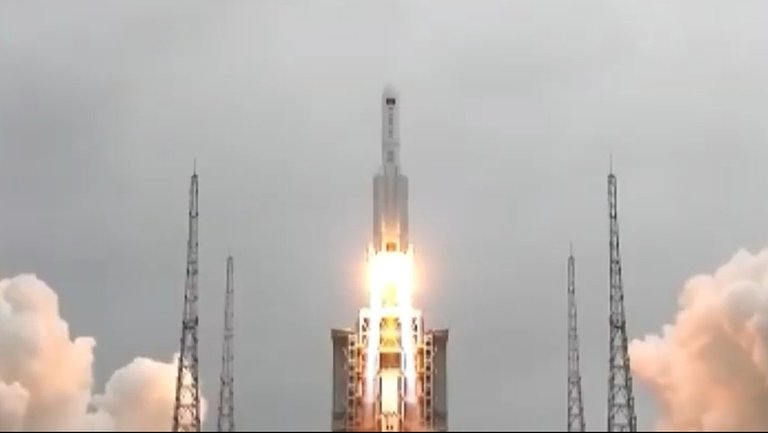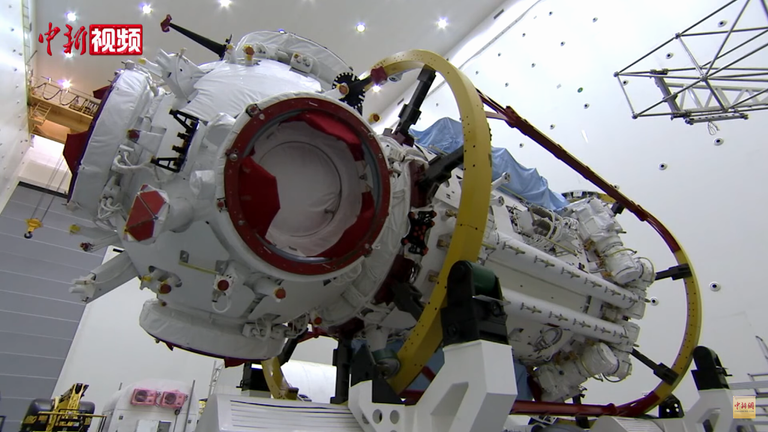April was a month of interesting news regarding space exploration, we had exciting images of the first flight of an aircraft on Mars, and now, we close the month with the news of the launch of the first module of the future Chinese permanent space station.

Launch of Tianhe. Source: Wkipedia.com
With this great event, China inaugurates a new stage of its space exploration program, last April 29th at 3:22 UTC was launched into orbit the first module of its new permanent space station, named Tianhe, this module took off aboard the powerful Chinese Long March CZ-5B Y2 rocket from the LC-101 ramp at the Wenchang space center.
Although this first module departed uninhabited, it won't be long before the new Chinese space station will see activity, as in May a cargo ship with supplies will be sent to dock with this module, and in June the first crew will depart to inhabit this module of the new space station.
The Tianhe is a module of 22.5 tons and 16.6 meters long, with a maximum diameter of 4.2 meters. With these dimensions, this module is the largest and heaviest spacecraft that China puts into orbit. It should be remembered that this is not the first Chinese space station, it is the third, being the first Tiangong 1 and 2; but these were rather space laboratories that were not suitable for permanent occupation, so this would be its first modular space station suitable for docking cargo vehicles and crew, which makes it suitable for permanent habitation.

Tianhe Central Stage. Source:Wikimedia commons.
When completed, this space station will be only one-fifth the size of the International Space Station, and will be similar in size to the former Russian space station MIR. Even as with the Russian modules, Tianhe is an independent spacecraft with its own life support, propulsion and communications systems. But despite these similarities to the Russian modules, Tianhe will look more like the U.S. ISS modules.
Tianhe, like the ISS, has segments called racks for the crew to perform their tasks, and is composed of three scientific racks: one for the analysis of medical samples, one to investigate the effects of weightlessness on the human body, and one to perform material science experiments.
Two more modules, Wentian and Mengtian, are expected to be attached next year, which will add more research racks. The three modules together will give the Chinese space station a total mass of 66 tons, and when all three are coupled, the complete station will be called Tiangong.. The space station will have a 15-year lifetime and is expected to be the center of China's manned space program for the next 10 years.
Undoubtedly, Tianhe will be a key piece that will allow China to expand its knowledge of space, and when the first crew arrives to inhabit it, we will once again have two operational space stations in orbit at the same time, which will increase mankind's activity in space.
Thanks for coming by to read friends, I hope you liked the information. See you next time.

The space outside our planet will always be something coveted by humans to conquer and perform astronomical studies, very interesting your post my friend, thanks for sharing.
Hi @emiliomoron
The exploration of space is a fascinating subject, the progress announced in this regard is very promising.
Thank you for sharing this information, excellent reading.
Have a great a day!
Regards.